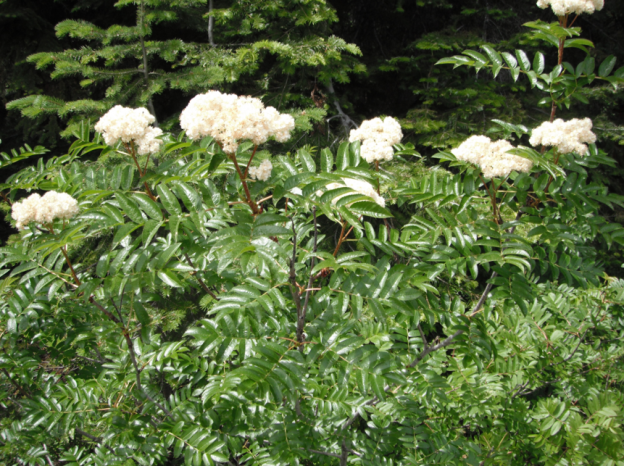Western Mountain Ash The Rose Family—Rosaceae
Sorbus scopulina Greene
(SOR-bus scawp-yu-LEE-nuh)
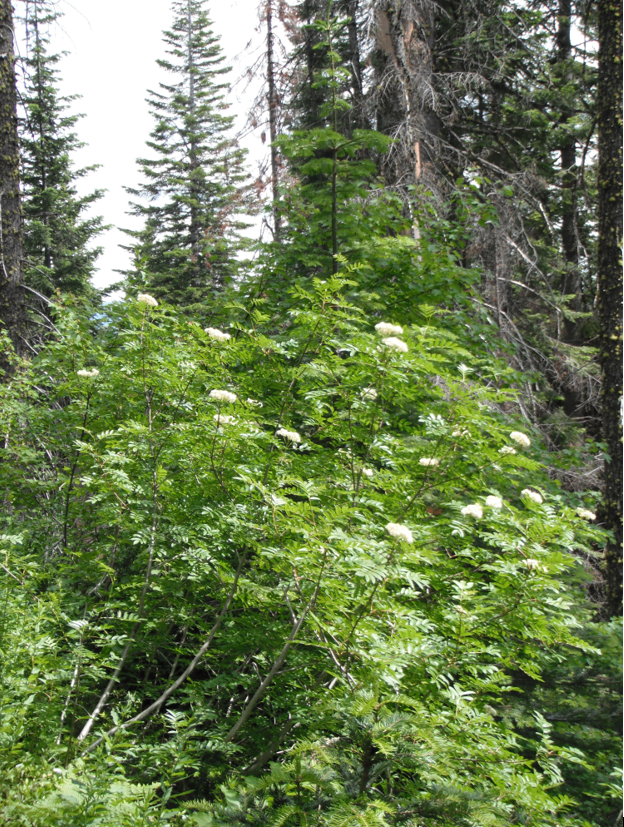 Names: Mountain Ashes also known as Rowans, Whitebeams, and Service Trees. True Ashes belong to the unrelated genus, Fraxinus. The word Rowan is thought to be from a Norse word for tree, or a Germanic word meaning “getting red,” referring to its fall foliage color and berries. Rowans were important trees in celtic mythology; the wood was used for Druid’s staffs, magic wands and dowsing rods. Scopulina means “of rocky places.” This species is also known as Rocky Mountain, Cascade, or Greene’s Mountain Ash, named after botanist, Edward Lee Greene.
Names: Mountain Ashes also known as Rowans, Whitebeams, and Service Trees. True Ashes belong to the unrelated genus, Fraxinus. The word Rowan is thought to be from a Norse word for tree, or a Germanic word meaning “getting red,” referring to its fall foliage color and berries. Rowans were important trees in celtic mythology; the wood was used for Druid’s staffs, magic wands and dowsing rods. Scopulina means “of rocky places.” This species is also known as Rocky Mountain, Cascade, or Greene’s Mountain Ash, named after botanist, Edward Lee Greene.
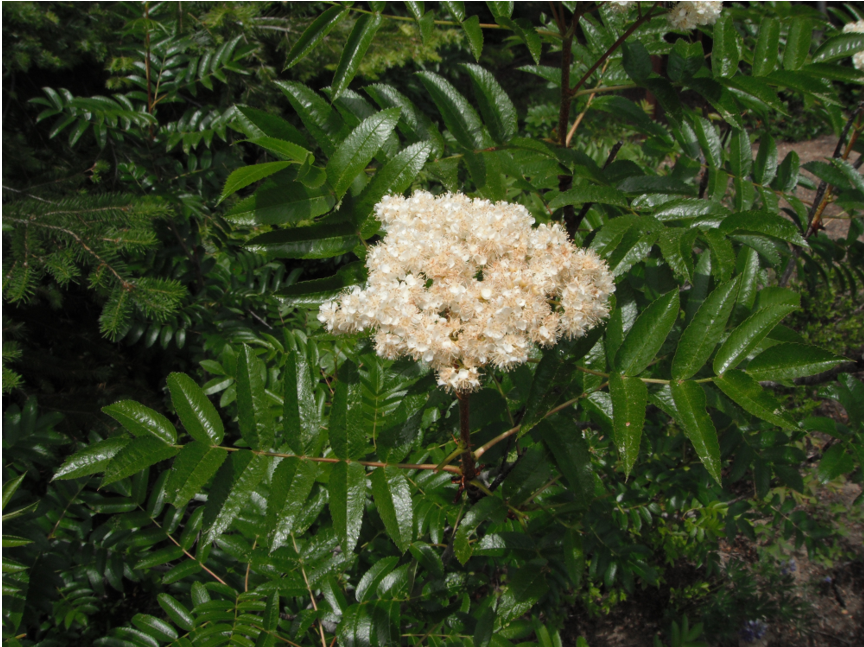 Relationships: There are about 100-200 species of Sorbus in the Northern Hemisphere and about half a dozen Sorbus species native to North America. Eurasian species have been introduced, become naturalized and interbred with native species; most notably, the European Mountain Ash, Sorbus aucuparia. Variety cascadensis, Cascade Mountain Ash, differs from the species by usually having 11 leaflets or fewer, and persistent stipules, whereas var. scopulina usually has some leaves with 13 leaflets. Var. cascadensis occurs mostly on the west slope of the Cascades, the Olympic Mountains, and the Sierras. There are intermediate forms on the east side of the Cascades and in the Wallowa Mountains. Amelasorbus jackii, a cross between Amelanchier alnifolia and S. scopulina has been observed in Oregon and Idaho.
Relationships: There are about 100-200 species of Sorbus in the Northern Hemisphere and about half a dozen Sorbus species native to North America. Eurasian species have been introduced, become naturalized and interbred with native species; most notably, the European Mountain Ash, Sorbus aucuparia. Variety cascadensis, Cascade Mountain Ash, differs from the species by usually having 11 leaflets or fewer, and persistent stipules, whereas var. scopulina usually has some leaves with 13 leaflets. Var. cascadensis occurs mostly on the west slope of the Cascades, the Olympic Mountains, and the Sierras. There are intermediate forms on the east side of the Cascades and in the Wallowa Mountains. Amelasorbus jackii, a cross between Amelanchier alnifolia and S. scopulina has been observed in Oregon and Idaho.
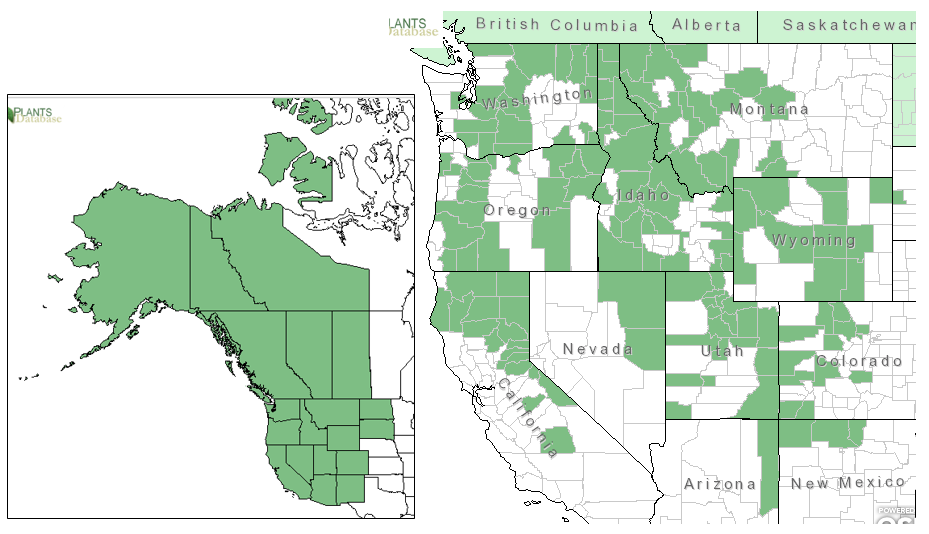
Distribution ofWestern Mountain Ash from USDA Plants Database
The species occurs from Alaska to the Northwest Territories; to Arizona and New Mexico; and the Pacific states to the Dakotas.
Growth: Western Mountain Ash grows 3-15 feet (1-5m)
Habitat: It grows on rocky hillsides, open woods, and along streams; usually in small clumps. Wetland designation: FACU; it usually occurs in non-wetlands but occasionally is found in wetlands.
Diagnostic Characters: Pinnately compound leaves have 9 to 13 leaflets and are yellowish-green, sharp-pointed, and finely toothed along most of the margin. Winter buds are white and sticky. Flowers are small and white in round to flat-topped clusters. Fruit are small, glossy, orange to scarlet, berry-like pomes borne in showy clusters.
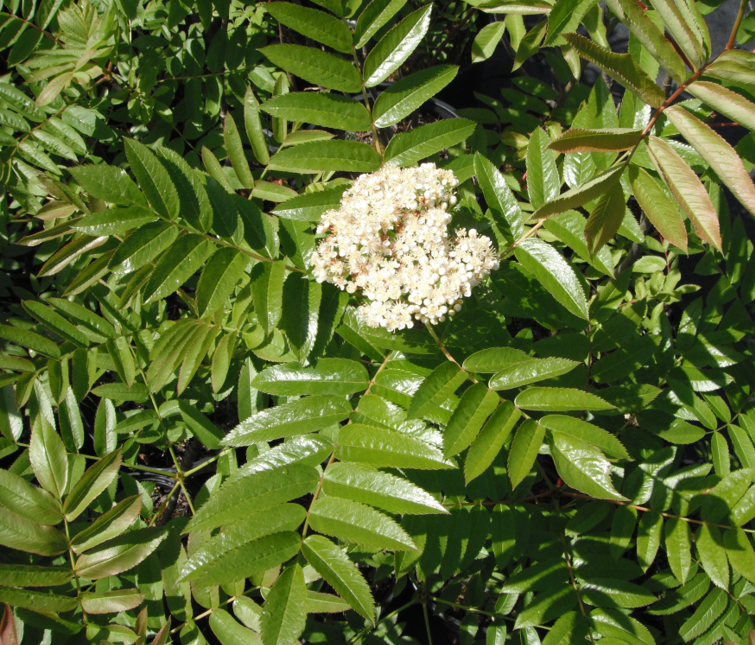
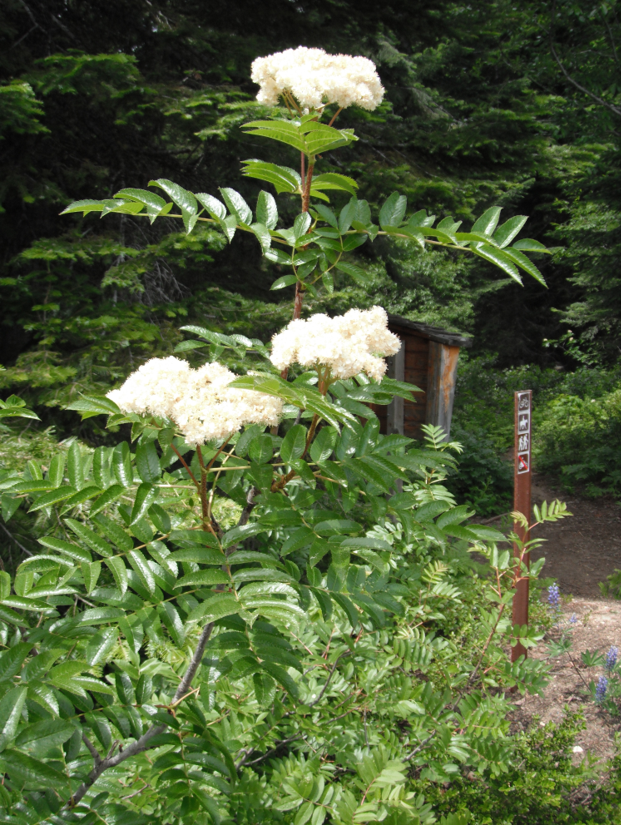 In the landscape: Our shrubby Mountain Ashes are most spectacular growing in clumps on hillsides. It is attractive when in bloom, but fall is its best season, with its yellow to peachy fall foliage and scarlet berries.
In the landscape: Our shrubby Mountain Ashes are most spectacular growing in clumps on hillsides. It is attractive when in bloom, but fall is its best season, with its yellow to peachy fall foliage and scarlet berries.
Phenology: Bloom time: May-July. Fruit ripens: July-September.
Propagation: Seeds should be stratified at 40º F (4º C) for 90-120 days. Some recommend presoaking the seeds for 24 hours. Semi-hardwood cuttings are best taken in late summer.
Use by Natives: Natives rarely ate these berries; but today they are sometimes used in pies, preserves, or wine-making. The fruit is sweeter after a frost. If eaten raw, they should be bletted, a process where they are kept in a cool, dry place and allowed to begin decaying or fermenting, similar to pears.
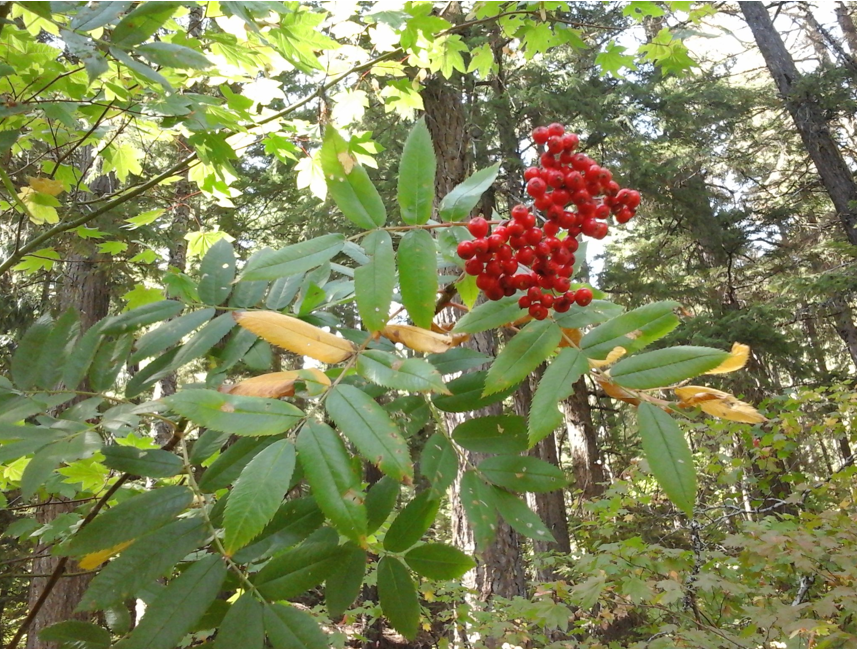
Use by Wildlife: The fruits, eaten by grouse, grosbeaks, Cedar Waxwings and Douglas Squirrels, are valuable to wildlife due to the fact that the fruit persists on the plant through the winter. Moose, deer and elk browse the twigs and foliage. Flowers are pollinated by insects.
Links:
Consortium of Pacific Northwest Herbaria
WTU Herbarium Image Collection, Plants of Washington, Burke Museum
E-Flora BC, Electronic Atlas of the Flora of British Columbia
Jepson Eflora, University of California
Ladybird Johnson Wildflower Center
Native Plants Network, Propagation Protocol Database
Native American Ethnobotany, University of Michigan, Dearborn

